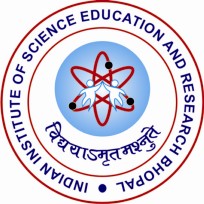
Homepage for PHY 402 Atomic and Molecular Physics
(January, 2022 - April, 2022)
Instructor: Dr. Phani Kumar
Learning Objectives
To understand the hierarchy of atomic and molecular energy levels, what implications these have for the interaction with electromagnetic radiation and which practical applications arise from which transitions.
Course Content
Hydrogen atom Hamiltonian: Angular and radial part of wavefunctions, Fine structure: relativistic kinetic energy term, spin-orbit term, Darwin term, Nuclear magnetism and hyperfine structure, Zeeman effect in the ground state of hydrogen, Stark effect in the n=2 state of hydrogen, Helium atom Hamiltonian: symmetry with respect to exchange, perturbation method for the ground and excited states, Hydrogen molecular ion: linear combination of atomic orbitals (LCAO) approach, Hydrogen molecule: molecular orbital (MO) and valence bond (VB) approaches, Atom-light interaction, Classical Lorentz model, Semi-classical treatment, Absorption, stimulated and spontaneous emission, Perturbation Hamiltonian in the electric dipole approximation, Transition probability in first order time-dependent perturbation theory, Rotating wave approximation, Electric dipole transitions and selection rules for linear and circularly polarized waves, Magnetic dipole transitions, Einstein's treatment of atom-light interaction, Transition rates for broadband and monochromatic excitation, Rabi oscillations, Nuclear magnetic resonance, Electron spin resonance, The Bloch vector and Bloch sphere, Stern-Gerlach experiment, Measurement of hyperfine structure using the atomic beam technique, Ramsey interferometers as atomic clocks
Literature
- Christopher J. Foot, Atomic Physics, Oxford University Press, 2004
- Peter van der Straten, Atoms and Molecules, Cambridge University Press, 2016
- Gilbert Grynberg, Introduction to Quantum Optics, Cambridge University Press, 2010
Course Assessment
- Attendance: 10%
- Two Quizzes: 30%
- Mid-semester Exam: 30%
- End-semester Exam: 30%
Last Updated: April 22, 2022